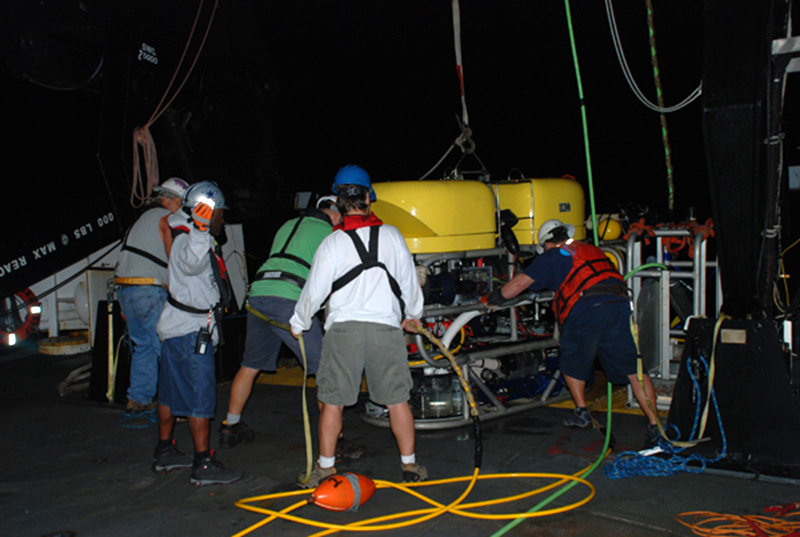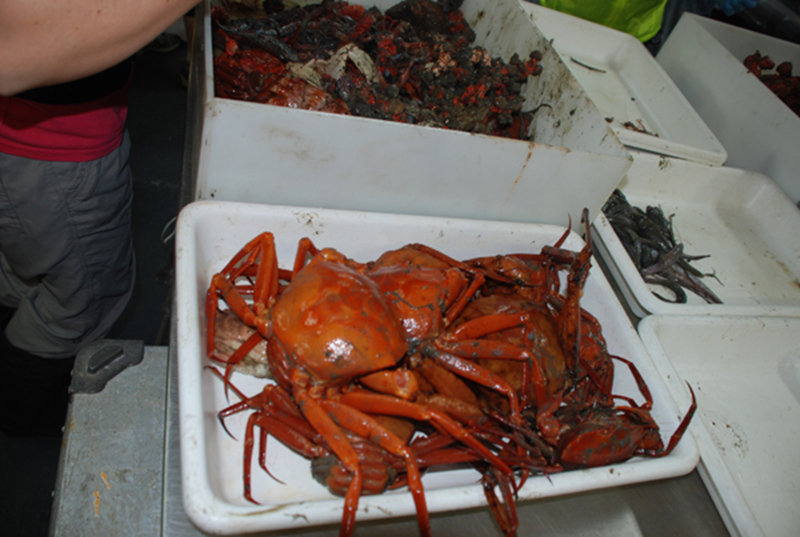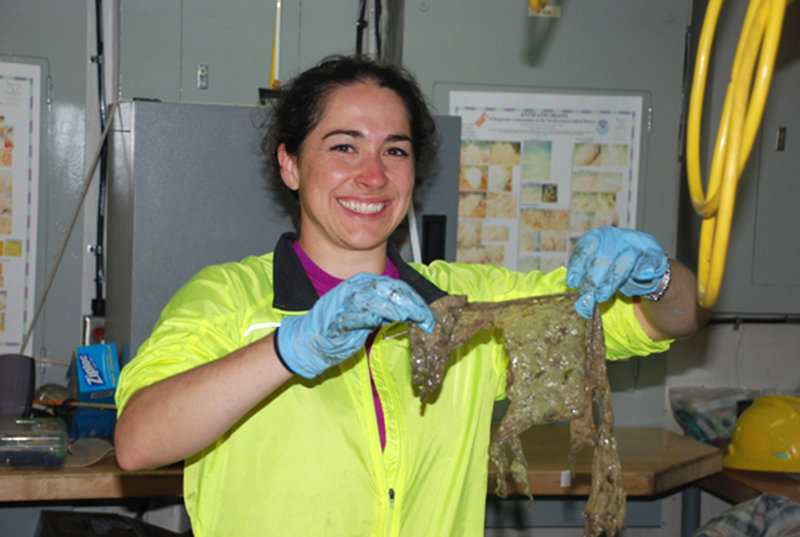
By Terry Connell, Web Coordinator - NOAA's National Ocean Service
September 21, 2012

Contents of the trawl are dumped into large trays and include a wide range of animals. Image courtesy of Deepwater Canyons 2012 Expedition, NOAA-OER/BOEM. Download image (jpg, 140 KB).
Despite a late start to the day due to winch issues, yesterday was our first successful remotely operated vehicle (ROV) dive. No shipwreck was found on this shallow-water dive, which mostly served to get the Kraken II ROV back in the water to work out any kinks. After bringing the ROV back on board, preparations were made for the night operations. On the schedule: Trawling.

The Kraken II safely on board. Image courtesy of Deepwater Canyons 2012 Expedition, NOAA-OER/BOEM. Download image (jpg, 101 KB).
The first trawl of the night was quite successful, bringing up a large sampling of benthic animals to process from a depth of about 400 meters. This was the start of a busy night! While the trawl was reset and dropped again, the animals, now in the wet lab, were sorted, labeled, sampled for carbon isotopes, and carefully bagged and placed in formalin (a preservative) for more in-depth study back at the land-based lab. By the time the next trawl was on deck, some of the isotope sampling was still being completed. Then the process started all over again.

The sorting begins! Like species are placed together. Image courtesy of Deepwater Canyons 2012 Expedition, NOAA-OER/BOEM. Download image (jpg, 104 KB).

Science crew sorting and labeling trawl contents. Image courtesy of Deepwater Canyons 2012 Expedition, NOAA-OER/BOEM. Download image (jpg, 120 KB).
These trawls are important for our understanding of the community structure and taxonomy of the deepwater canyons. In addition to collecting other types of data, scientists are conducting carbon isotope studies on everything they find. Carbon atoms in living organisms provide a history showing how the organism obtained these atoms. In plants, it is a clue for photosynthetic reactions. In animals, it is a clue for what they have been eating indicating the food chain in the canyons.
But, further analysis is work left for home. For now, the samples are all sorted, labeled, sampled, bagged, preserved, and stored as the next load comes in for the same process.
With five planned trawls, it was a long night...

Yep, we found your grocery bag! There is trash all over the ocean... Image courtesy of Deepwater Canyons 2012 Expedition, NOAA-OER/BOEM. Download image (jpg, 98 KB).

With sorting complete, the science crew move on to the task of labeling, photographing and iso-sampling the study. Image courtesy of Deepwater Canyons 2012 Expedition, NOAA-OER/BOEM. Download image (jpg, 116 KB).